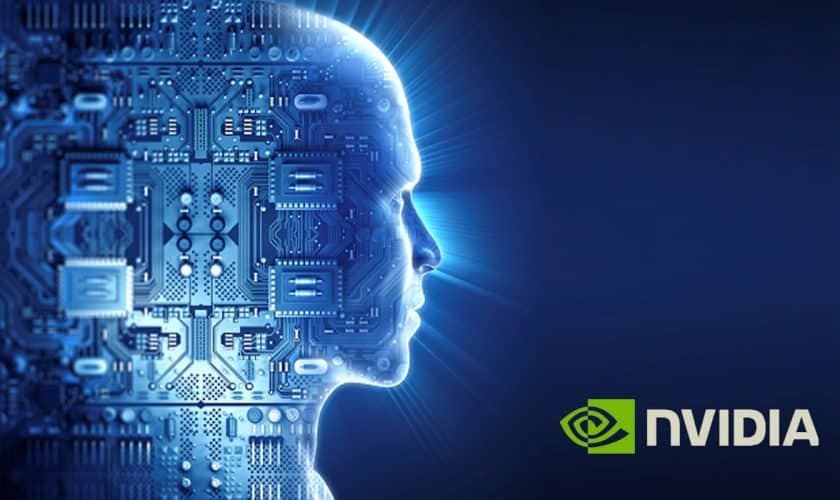
Introduction
With enthusiasm, let’s navigate through the intriguing topic related to Nvidia: Unleashing the Power of AI and Visual Computing. Let’s weave interesting information and offer fresh perspectives to the readers.
Table of Content
- 1 Introduction
- 2 The Nvidia Revolution: More Than Just Graphics Cards
- 2.1 Nvidia’s GPU Advantage: The Engine of AI
- 2.1.1 CUDA: The Software Backbone of Nvidia’s Ecosystem
- 2.1.1.1 Deep Learning Frameworks: Empowering AI Development
- 2.1.1.1.1 The Rise of AI in Healthcare: Nvidia’s Contribution
- 2.1.1.1.2 Self-Driving Cars: The Autonomous Revolution
- 2.2 Beyond AI: Nvidia’s Impact on Visual Computing
- 2.2.2 The Metaverse and Virtual Worlds: Nvidia’s Role
- 2.2.3 Challenges and Future Directions
- 2.2.3.2 The Importance of Sustainability
- 2.2.3.3 Addressing Accessibility Concerns
- 2.2.3.4 Conclusion: A Future Powered by Nvidia
- 3 FAQs
- 4 Closure
Nvidia: Unleashing the Power of AI and Visual Computing
The Nvidia Revolution: More Than Just Graphics Cards
Let’s be honest, for many, Nvidia conjures images of high-end graphics cards, the lifeblood of gaming PCs. But that’s only scratching the surface. Nvidia isn’t just about making games look breathtakingly realistic; they’re at the forefront of a technological revolution, quietly powering the AI and visual computing advancements that are transforming our world. Think self-driving cars navigating complex cityscapes, medical imaging providing unprecedented clarity, and groundbreaking scientific simulations pushing the boundaries of human understanding. All of this, and so much more, is fueled by Nvidia’s groundbreaking technology. This isn’t just about faster frame rates; it’s about accelerating progress across multiple sectors, and understanding that is key to grasping Nvidia’s true significance. We’ll delve into the specifics, exploring how Nvidia’s innovations are shaping the future, and what that means for us all. Remember that time you marveled at a stunningly realistic video game? Or perhaps you saw a self-driving car effortlessly navigate a busy intersection? These seemingly disparate events are connected by a common thread: the power of Nvidia’s technology. We’ll unravel this fascinating story, exploring the intricacies of their hardware and software, and the impact they’re having on our lives. Prepare to be amazed.
Nvidia’s GPU Advantage: The Engine of AI
At the heart of Nvidia’s success lies the Graphics Processing Unit (GPU). While initially designed for rendering graphics, GPUs possess a unique architecture ideally suited for parallel processing – the cornerstone of modern artificial intelligence. Unlike CPUs which excel at sequential tasks, GPUs can handle thousands of calculations simultaneously, making them incredibly efficient for the complex algorithms powering AI. This parallel processing capability is what allows AI models to train faster and more efficiently, leading to breakthroughs in areas like natural language processing, image recognition, and machine learning. Imagine trying to build a skyscraper one brick at a time versus constructing multiple sections simultaneously. That’s the difference between a CPU and a GPU in the context of AI processing. Nvidia’s strategic focus on GPU development, coupled with their pioneering software frameworks, has solidified their position as a dominant force in the AI hardware landscape. The sheer processing power of these GPUs allows for the training of increasingly sophisticated AI models, which in turn, opens up a world of possibilities across diverse fields. This isn’t just about speed; it’s about unlocking capabilities previously deemed impossible.
CUDA: The Software Backbone of Nvidia’s Ecosystem
Nvidia’s CUDA (Compute Unified Device Architecture) is the software platform that unlocks the power of their GPUs. CUDA allows developers to write programs that leverage the parallel processing capabilities of GPUs, making it significantly easier to develop and deploy AI applications. Think of CUDA as the operating system for Nvidia’s GPUs, providing the necessary tools and infrastructure for developers to build upon. Without CUDA, the potential of Nvidia’s GPUs would be severely limited. It’s the bridge between powerful hardware and practical applications, enabling developers to create innovative solutions across various sectors. From scientific research to autonomous vehicles, CUDA serves as the engine room, facilitating the development of cutting-edge AI applications. It’s not just a software platform; it’s an ecosystem, fostering a vibrant community of developers pushing the boundaries of what’s possible.
Deep Learning Frameworks: Empowering AI Development
Nvidia’s commitment extends beyond hardware. They actively support and contribute to major deep learning frameworks like TensorFlow and PyTorch, making it easier for developers to utilize their GPUs for AI development. These frameworks provide pre-built tools and libraries, simplifying the process of building and training AI models. Think of them as pre-fabricated building blocks that make constructing complex AI systems significantly easier and faster. Nvidia’s involvement ensures seamless integration between their hardware and popular software, fostering a robust and accessible ecosystem for AI development. This collaborative approach has fostered a thriving AI community, accelerating innovation and democratizing access to powerful AI tools. It’s a testament to Nvidia’s commitment to not just building superior hardware, but also to fostering a supportive environment for the entire AI ecosystem.
The Rise of AI in Healthcare: Nvidia’s Contribution
The healthcare industry is undergoing a transformation driven by AI, and Nvidia is playing a critical role. Their GPUs are powering medical imaging advancements, enabling faster and more accurate diagnoses. Think of AI-powered tools analyzing medical scans to detect cancerous tumors earlier and more precisely. This is not just about speed; it’s about saving lives. Nvidia’s technology is accelerating research in drug discovery, personalized medicine, and robotic surgery. It’s a powerful example of how Nvidia’s technology is translating into tangible improvements in healthcare, impacting the lives of millions. This isn’t just about technological advancement; it’s about improving human lives.
Self-Driving Cars: The Autonomous Revolution
The development of self-driving cars is a complex undertaking, requiring immense processing power to analyze sensor data in real-time. Nvidia’s GPUs are at the heart of many autonomous vehicle systems, enabling them to navigate complex environments and make critical decisions. Imagine the intricate calculations required to process data from cameras, lidar, and radar simultaneously, all while making split-second decisions to ensure passenger safety. This is where Nvidia’s technology truly shines. Their powerful GPUs provide the processing muscle needed for these complex algorithms, enabling safer and more efficient autonomous vehicles. This isn’t just about convenience; it’s about revolutionizing transportation and improving road safety.
Beyond AI: Nvidia’s Impact on Visual Computing
While AI is a significant focus, Nvidia’s contributions to visual computing extend far beyond. Their GPUs power high-end gaming, professional visualization, and virtual reality applications. Think of the stunning visuals in today’s video games, the realistic simulations used in engineering and design, and the immersive experiences offered by virtual reality. Nvidia’s technology is the backbone of these experiences, pushing the boundaries of what’s visually possible. This isn’t just about entertainment; it’s about creating new possibilities for collaboration, innovation, and education.
The Metaverse and Virtual Worlds: Nvidia’s Role

The metaverse, a persistent, shared virtual world, is a rapidly evolving concept, and Nvidia is playing a crucial role in its development. Their GPUs are essential for rendering the complex graphics and simulations required to create realistic and immersive virtual environments. Imagine a future where we collaborate, learn, and socialize in richly detailed virtual worlds. Nvidia’s technology is powering this vision, enabling the creation of immersive and engaging experiences. This isn’t just about gaming; it’s about transforming how we interact and collaborate in the digital world.
Challenges and Future Directions
Despite Nvidia’s success, challenges remain. The high cost of their GPUs can be a barrier for some, and the energy consumption of these powerful chips is a growing concern. Nvidia is actively addressing these issues, investing in more energy-efficient architectures and exploring new approaches to reduce costs. The future of Nvidia likely involves further advancements in AI and visual computing, with a continued focus on sustainability and accessibility. This isn’t just about technological advancement; it’s about responsible innovation.
The Importance of Sustainability
The environmental impact of high-performance computing is a significant concern, and Nvidia is actively working to mitigate the energy consumption of their GPUs. They are investing in research and development of more energy-efficient architectures and exploring innovative cooling solutions. This commitment to sustainability is crucial for the long-term viability of the industry and reflects a growing awareness of the environmental responsibility of technological advancements. It’s not just about performance; it’s about responsible innovation.
Addressing Accessibility Concerns
The high cost of Nvidia’s high-end GPUs can be a barrier to entry for many individuals and organizations. Nvidia is working to address this by offering a range of products at different price points and exploring cloud-based solutions that make their powerful computing resources more accessible. This commitment to accessibility is crucial for ensuring that the benefits of their technology are available to a wider audience. It’s not just about profit; it’s about democratizing access to powerful technology.
Conclusion: A Future Powered by Nvidia
Nvidia is more than just a graphics card company; it’s a driving force behind the AI and visual computing revolution. Their innovative GPUs and software frameworks are powering advancements across multiple sectors, from healthcare and autonomous vehicles to gaming and the metaverse. While challenges remain, Nvidia’s commitment to innovation, sustainability, and accessibility ensures a bright future for the company and the technologies it empowers. The journey ahead promises even more groundbreaking developments, shaping our world in ways we can only begin to imagine.
Nvidia’s continued success hinges on its ability to adapt to the ever-evolving landscape of technology. Maintaining its position at the forefront of innovation requires ongoing investment in research and development, a commitment to sustainability, and a focus on addressing the accessibility concerns associated with its high-performance products. The future is bright for Nvidia, but it’s a future that requires continued vigilance, adaptability, and a commitment to responsible technological advancement.
FAQs
- What is CUDA? CUDA is Nvidia’s parallel computing platform and programming model. It allows software developers to use Nvidia GPUs for general purpose processing – an approach known as GPGPU (General-Purpose computing on Graphics Processing Units).
- How does Nvidia’s technology impact healthcare? Nvidia’s GPUs accelerate medical imaging analysis, enabling faster and more accurate diagnoses. They also power AI-driven drug discovery and personalized medicine initiatives.
- What role does Nvidia play in self-driving cars? Nvidia’s GPUs provide the immense processing power needed for autonomous vehicle systems to analyze sensor data in real-time and make critical driving decisions.
- What are the environmental concerns surrounding Nvidia’s products? The high energy consumption of Nvidia’s high-performance GPUs is a growing concern. Nvidia is actively working on more energy-efficient designs and cooling solutions.
- How is Nvidia involved in the Metaverse? Nvidia’s GPUs are crucial for rendering the complex graphics and simulations necessary to create realistic and immersive virtual environments within the metaverse.

Closure
In conclusion, we hope this article has provided valuable insights into Nvidia: Unleashing the Power of AI and Visual Computing. We hope you enjoyed reading and found it insightful. See you in our next article!

